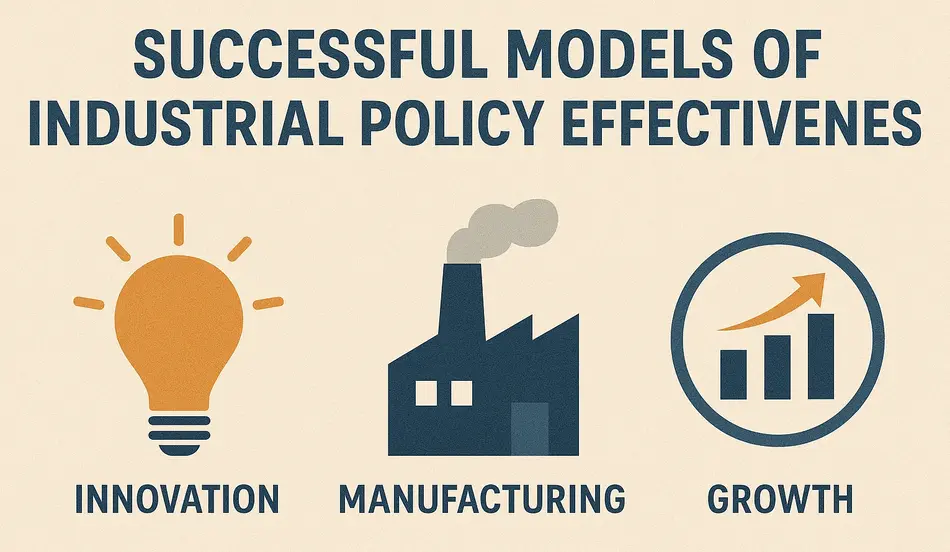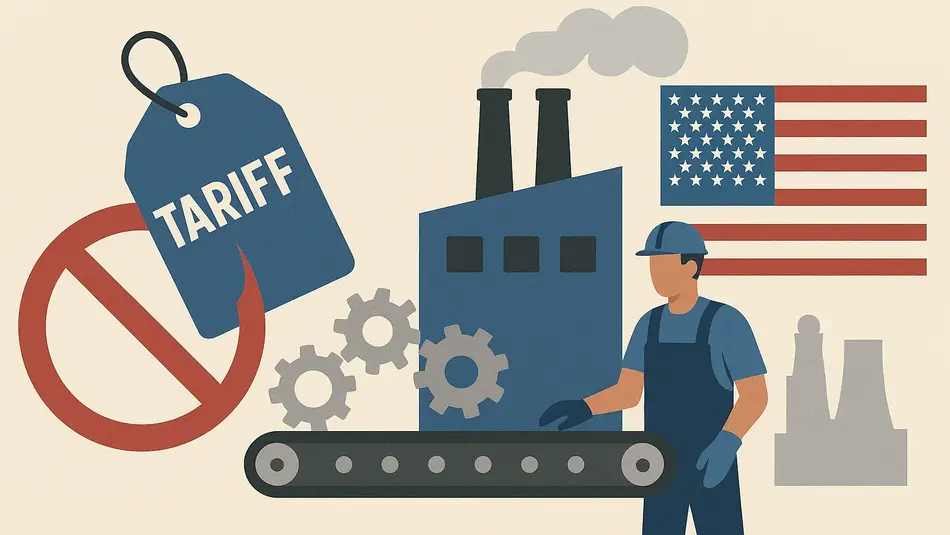The Myth of Manufacturing Revival Through Tariffs
Leading economists have determined that industrial policy effectiveness – not simply imposing tariffs – is the critical factor in rebuilding a nation’s manufacturing base. Recent studies, including analysis from Wells Fargo economists, conclude that tariffs alone will not reindustrialize America, with estimates suggesting it would require a minimum investment of $2.9 trillion to restore manufacturing to 1979 levels.
“A meaningful increase in factory jobs does not appear likely in the foreseeable future in our view,” economists at Wells Fargo wrote, highlighting how industrial policy effectiveness depends on far more than border taxes.
The Real Manufacturing Challenge
The decline in US manufacturing stems from decades of prioritizing financial services over industrial development. Since the 1950s, manufacturing has fallen from over 25% of GDP to under 11% today, while the financial sector has grown from 10% to over 20%.
This shift reflects a fundamental truth about industrial policy effectiveness: without government planning and strategic investment, market forces naturally push capital toward more profitable financial instruments rather than manufacturing facilities.
Successful Models of Industrial Policy Effectiveness
Countries with robust manufacturing sectors demonstrate that industrial policy effectiveness requires comprehensive government planning, not just protective trade measures.

China’s Manufacturing Success Story
China’s emergence as the world’s manufacturing leader responsible for approximately one-third of global manufacturing isn’t simply due to labor costs, which have risen significantly over decades.
“China stopped being the low labor cost country many years ago,” notes former Apple CEO Tim Cook. “The reason [companies manufacture in China] is because of the skill and the quantity of skill in one location.”
This industrial policy effectiveness stems from five-year plans targeting specific sectors with coordinated investment in infrastructure, worker training, and financial support through state-owned banks.
Key Components of Effective Industrial Policy
History shows that industrial policy effectiveness depends on three interconnected strategies that must work in harmony:
1. Strategic Infrastructure Investment
Successful industrial policy begins with significant government investment in physical and human infrastructure – roads, electricity grids, public transportation, education, and worker training.
The “American System” advocated by historical figures like Alexander Hamilton and Abraham Lincoln recognized this, promoting what they called “internal improvements” alongside protective tariffs.
2. Financial Sector Discipline
Industrial policy effectiveness requires directing capital toward productive manufacturing investments instead of financial speculation. Countries with strong manufacturing sectors typically exercise significant control over their banking systems.
“In the US, you could have a meeting of tooling engineers and I’m not sure we could fill the room. In China, you could fill multiple football fields,” Tim Cook observed, highlighting how China prioritized developing technical expertise while the US financial sector expanded.
3. Long-Term Planning Mechanisms
Industrial policy effectiveness depends critically on consistent government planning that survives political transitions. This includes:
• Setting clear national manufacturing priorities
• Providing targeted subsidies and tax incentives
• Supporting research and development in strategic sectors
• Creating specialized industrial zones with supportive infrastructure
• Ensuring workforce development aligns with industrial needs
The absence of these planning mechanisms explains why many manufacturing jobs continue to migrate to countries with cohesive industrial policies.
Industrial Policy Effectiveness in the Digital Age
Modern manufacturing increasingly relies on automation, complicating the relationship between industrial policy effectiveness and job creation. A CNBC survey of manufacturing firms revealed that:
• 81% would primarily use automation if they reshored production
• 57% were planning layoffs due to economic uncertainty
• Only 14% cited taxes as their primary manufacturing challenge
• 21% identified skilled worker shortages as their biggest concern
These findings underscore that industrial policy effectiveness today requires addressing automation and developing advanced manufacturing skills rather than simply imposing tariffs.
The Path Forward for US Manufacturing
For genuine manufacturing revival, experts suggest the United States needs:
1. Comprehensive infrastructure modernization focused specifically on manufacturing needs
2. Significantly increased investment in technical education and engineering programs
3. Strategic incentives that direct financial capital toward productive manufacturing
4. Consistent policies that transcend political administrations
5. Workforce development that prepares Americans for advanced manufacturing roles
According to Brookings Institution research, industrial policy effectiveness ultimately depends on recognizing manufacturing’s role in fostering innovation and technological advancement, not just preserving traditional jobs.
Industrial policy effectiveness remains essential for economic security, yet requires far more than tariffs – it demands strategic vision, sustained investment, and coordination between government, industry, and educational institutions.




